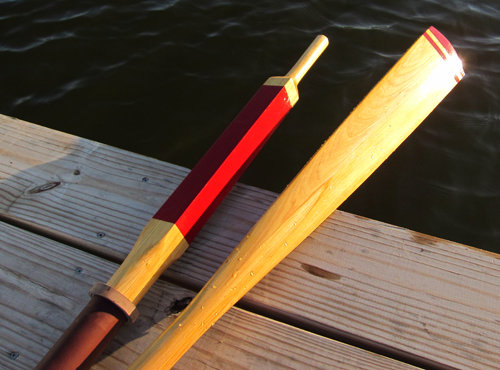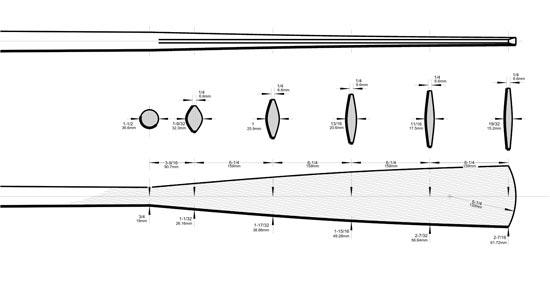









Product Description
We think these oar plans and patterns will create not only superior wooden rowing oars for your classic small boat, but a woodworking project that's as satisfying as any project can be.
Making oars is a wood carving exercise more like artwork than carpentry. We all need oars for our small boats and these plans will make it possible for the average woodworker to produce a beautiful pair of oars from scratch.
Plans for oars may be found in various boatbuilding books and magazine articles, but they are usually only suited for experts who can visualise how to transfer architectural drawings to a square blank of wood. This is often daunting or insurmountable for an otherwise worthy woodworker, which is why these plans come with a detailed step-by-step manual and optional plywood templates.
John Harris spent six months designing, prototyping and documenting the assembly and shaping of elegant traditional rowing oars. These oars are ideal for any fixed-seat hull from a 7-foot dinghy to a performance pulling boat as well as everything in between.
The oars aren't spoon-blades, which are very difficult to make, but they have so much refinement in shape that the spoon-blade feature isn't missed, and these are perfect for traditional smallcraft of all types. Tweaks include shudder-free blades, just the right amount of ‘spring’ in the shafts and counterweights inboard of the rowlocks. The handles have improved shaping: being thinner, they are more natural in the hand. Mass-produced oars require thick handles (which tire the hands on long rows) so that the lathe they are made on can hold them.
Construction starts with the selection of suitable timber (which will probably be laminated in two or three layers to reach the necessary thickness). Builders lay out the oar's shape, or trace the pattern, and use a saw to rough-cut the blank to shape.
Shaping continues with a block plane and a small draw knife. You are guided at each step by either the detailed drawings or by the wooden templates. The manual ends with instructions for varnishing and adding leather oar collars.
Plans and Manual
The manual contains highly detailed drawings for oars in sizes from 6′ to 9′6″, comprehensive step-by-step instructions and construction photographs of unprecedented detail. Armed with the manual and a couple of planks of spruce or the like, an experienced builder will soon have a very efficient and attractive pair of rowing oars.
PDF plans and manual
This option is to download the complete plans and manual in PDF format. After credit card authorisation a download link will be sent to the email address put on the order form.
Templates and Patterns
Builders with less woodworking experience will benefit from using these full-size computer-cut plywood templates and patterns to make it easy to transfer the subtle shapes to the lumber. These will be available soon.



